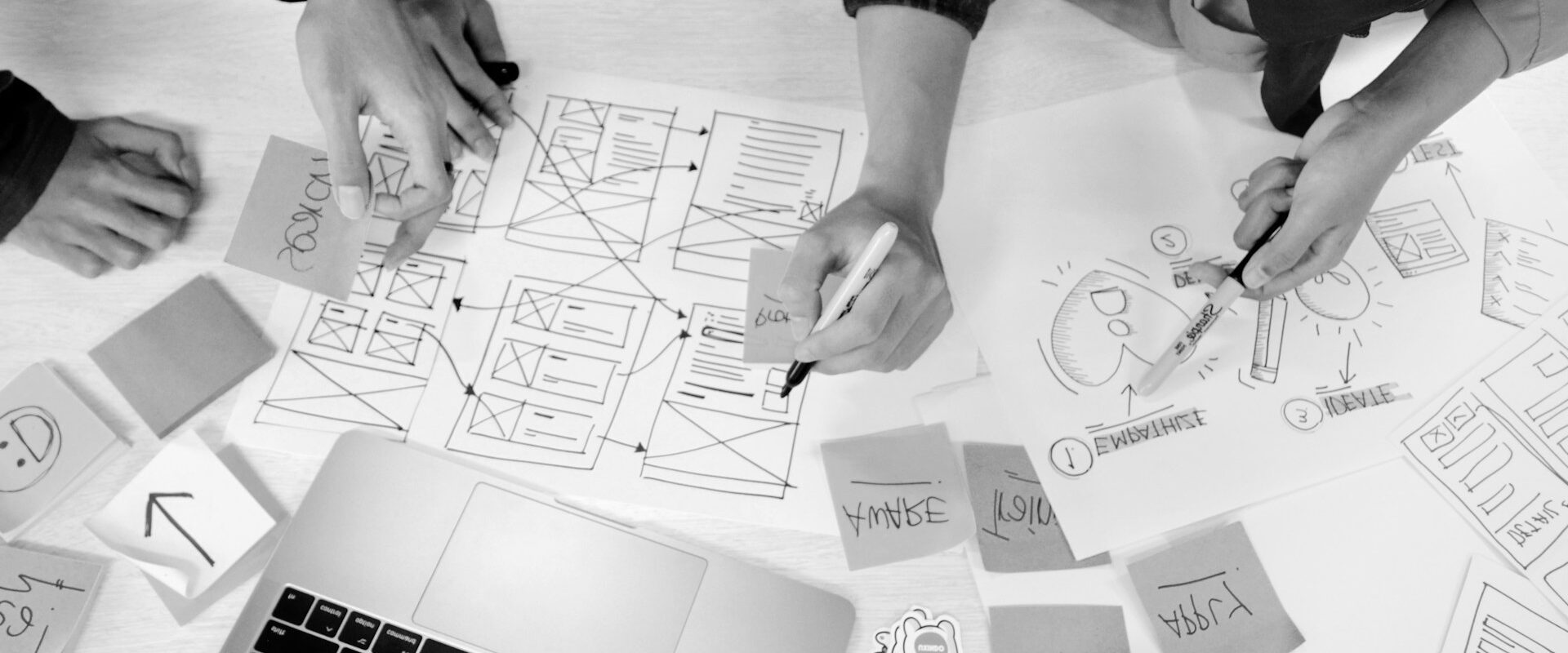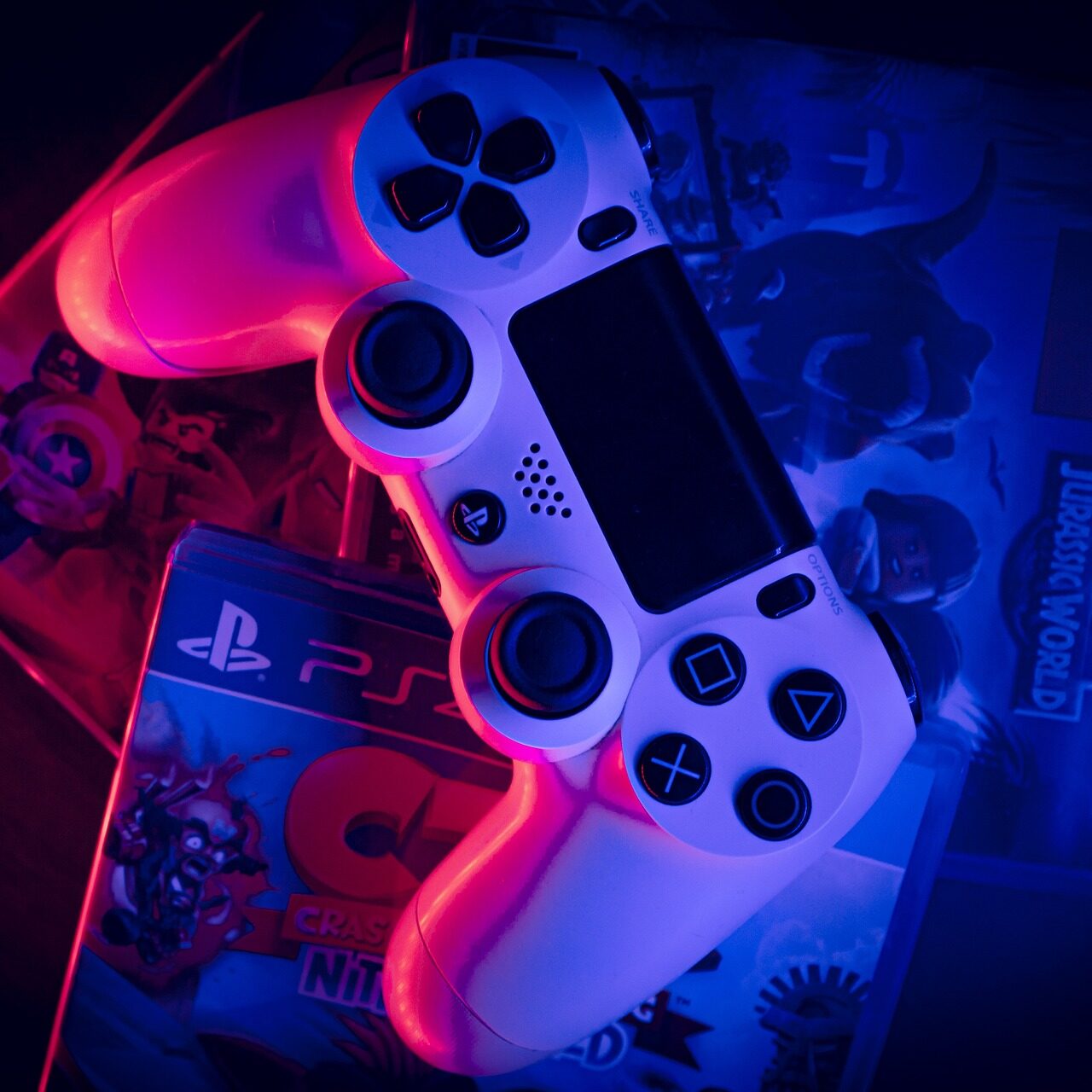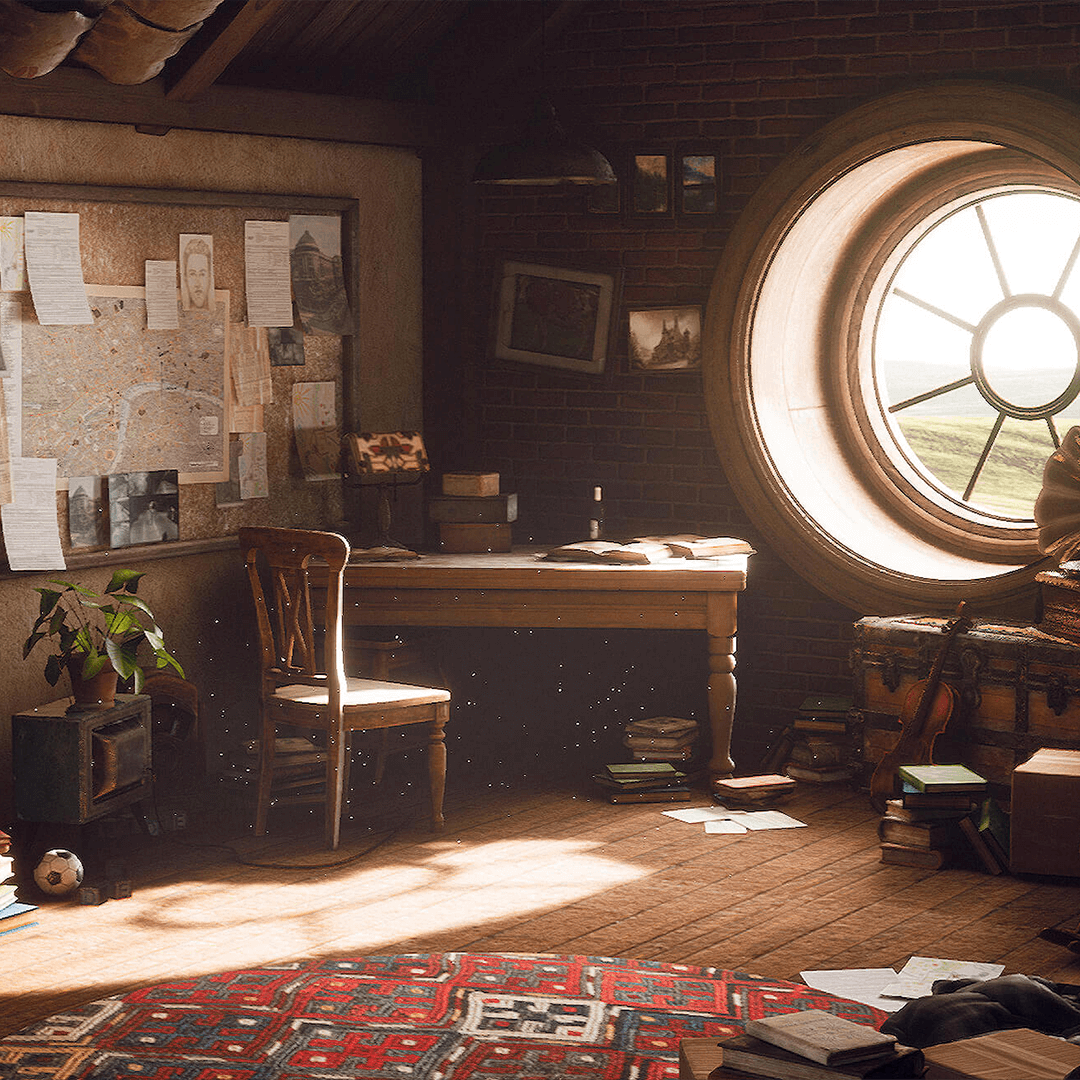UX Design: A Journey Through Time
Ages of Transformation From Past to Present
In the ever-evolving world of technology, user experience (UX) design plays a vital role in shaping how we interact with digital products. But how did UX design come to be? Let’s embark on a fascinating journey through time to explore its origins and evolution.
The Seeds of UX: Early Computing Era (1960s – 1980s)
Even in the age of clunky mainframes and green text on black screens, the concept of UX wasn’t entirely absent. Back in the 1960s-1980s, forward-thinking engineers recognized the importance of the “human factor” in computing. This led to the birth of Human-Computer Interaction (HCI), a field dedicated to making computer systems more usable and user-friendly.
The Rise of the Web: 1990s and Beyond
The 1990s witnessed the internet exploding onto the scene, bringing with it a new frontier for user experience (UX) design. Early websites were basic, prioritizing functionality over aesthetics. However, as the web matured, designers began to shift their focus. They started considering how users navigate websites, how information is presented, and how to create an overall positive interaction. This marked the beginning of UX design as we know it today.
Pioneers of UX Design
The evolution of UX design wouldn’t be complete without acknowledging the visionary individuals who shaped its foundation. Let’s meet some of the prominent UX design pioneers:
Donald Norman This influential figure coined the term “user experience” (UX) while working at Apple in the 1990s. His book, The Design of Everyday Things remains a classic, emphasizing the importance of user-centered design and usability principles in all aspects of product design, not just digital products.
Jakob Nielsen A giant in the field of web usability, Nielsen is renowned for his work on usability heuristics – a set of principles for designing user-friendly interfaces. He co-founded the Nielsen Norman Group, a leading UX research and training consultancy, and authored the influential book Designing Web Usability.
Alan Cooper This pioneer championed the concept of personas in user-centered design. His book, The Inmates Are Running the Asylum, argues for prioritizing user needs in software design. He also introduced the concept of personas as a design tool, helping designers understand and empathize with their target users.
Steve Krug is credited with simplifying and popularizing usability testing. His book, Don’t Make Me Think, is a practical guide to web usability, emphasizing the importance of clear navigation and intuitive design.
The Modern UX Designer: Mastermind of User Experience
The role of a UX designer has transformed alongside the digital landscape. Today, UX designers are the champions of user experience, ensuring seamless interactions with digital products. Let’s delve into their key responsibilities and the tools that empower them.

Key Responsibilities
- User Research: UX designers are like detectives, uncovering user needs and behaviors. They conduct interviews, surveys, and usability tests to understand user pain points, motivations, and mental models.
- Interaction Design: Imagine crafting the blueprint for a user’s journey. UX designers design the layout and interactive elements of digital products, focusing on intuitive navigation and a delightful user experience.
- Prototyping: Before diving into development, UX designers build wireframes and prototypes – low-fidelity representations of the design. This allows for testing and iterating on concepts before any code is written.
- Collaboration: UX design is a team sport. UX designers work closely with developers, product managers, and other stakeholders to ensure user-centered design principles are implemented throughout the development process.
Tools and Technologies
- Design Software: UX designers have a digital toolbox at their disposal. Tools like Sketch, Figma, Adobe XD, and InVision are industry-standard for creating user interfaces, wireframes, and prototypes that can be easily shared and reviewed.
- User Testing Tools: Understanding user feedback is crucial. Software like UserTesting, Optimal Workshop, and Lookback streamlines the user testing process, allowing designers to observe and gather valuable insights from real users interacting with prototypes.
- Analytics: Data is a UX designer’s best friend. Tools like Google Analytics, Hotjar, and Mixpanel provide insights into user behavior on live products. By analyzing user flows and identifying areas of improvement, UX designers can make data-driven decisions to optimize the user experience.
Where UX Design Shines: Shaping User Experiences Across Industries
The impact of UX design extends far beyond websites and apps. Here’s a glimpse into how UX designers empower various industries
- Web and Mobile Applications: In today’s mobile-first world, UX designers play a critical role in crafting intuitive and efficient user experiences across devices. They ensure users can navigate apps and websites seamlessly, achieving their goals with minimal frustration.
- E-commerce: A smooth online shopping experience is crucial for any e-commerce business. UX designers create user journeys that are clear, engaging, and optimized for conversions. By focusing on user needs and behaviors, they help businesses increase customer satisfaction and boost sales.
- Software Development: Whether it’s consumer-facing software or enterprise applications, usability is paramount. UX designers collaborate with developers to ensure software products are intuitive, efficient and meet the needs of their target users. This not only improves user satisfaction but also reduces support costs and training time.
The Future of UX Design: A Glimpse into Tomorrow’s User Experiences
The landscape of UX design is constantly evolving, shaped by emerging technologies and user expectations. Here’s a peek into what the future holds for UX design.
Trends and Innovations
- AI and Machine Learning (ML): Get ready to collaborate with intelligent machines! AI and ML will revolutionize UX design by personalizing user experiences based on individual needs and preferences. Imagine chatbots that anticipate your questions or interfaces that adapt to your behavior. Additionally, AI can automate repetitive tasks like data analysis, freeing up UX designers to focus on strategic design thinking.
- Voice and Gesture Interfaces: The world beyond screens is beckoning. The rise of smart speakers, virtual reality (VR), and augmented reality (AR) technologies will usher in a new era of UX design. Imagine navigating virtual spaces with hand gestures or controlling interfaces with your voice. UX designers will need to adapt their skills to create intuitive and engaging experiences for these new interaction paradigms.
- Inclusive Design: Empathy is at the core of UX design, and the future demands an even stronger focus on inclusivity. UX designers will champion accessibility, ensuring digital products are usable by everyone, regardless of abilities. This includes designing for users with disabilities, cultural sensitivities, and varying levels of technical expertise.
- Sustainable Design: The environmental impact of digital products is a growing concern. UX designers will play a crucial role in promoting sustainable design practices. This might involve creating interfaces that are energy-efficient, minimizing data usage, or designing products with longer lifespans.
Embrace the Future
The future of UX design is brimming with exciting possibilities. By staying informed about these trends and honing their skills, UX designers can create user experiences that are not only delightful but also ethical, inclusive, and sustainable.
Opportunities and Benefits
The future of UX design isn’t just about exciting trends; it’s about a flourishing career path brimming with opportunities. Here’s what awaits skilled UX designers.
- Soaring Demand: The digital transformation sweeping across industries has created an unprecedented demand for UX expertise. Businesses of all sizes recognize the value of exceptional user experiences, and this demand is only expected to grow.
- Diverse Career Landscape: Gone are the days of UX design being confined to tech companies. Today, UX designers can find fulfilling careers in a wide range of sectors, from cutting-edge startups and established tech giants to healthcare providers and educational institutions.
- Meaningful Impact: UX design is more than just aesthetics; it’s about shaping how people interact with technology. UX designers have the power to create user experiences that are not only intuitive and enjoyable but also solve problems, improve efficiency, and enhance user satisfaction. The impact of their work can be felt across various industries, positively affecting the lives of everyday users.
- Lifelong Learning Journey: The world of UX design is dynamic and ever-evolving. New technologies emerge, user expectations shift, and design best practices adapt. This constant evolution ensures that UX design is a stimulating and intellectually engaging career. UX designers who embrace lifelong learning and stay at the forefront of trends will be well-positioned for continued success.
Charting Your Course: How to Launch Your UX Design Career
The exciting world of UX design beckons! But how do you take that first step? Here’s a roadmap to guide your journey.
Educational Background
A formal education can equip you with a solid foundation in UX design principles. However, the path to a successful UX career isn’t limited to a single degree. Here are some options to consider:
- UX Design Degrees: Earning a degree specifically in UX design can provide a comprehensive understanding of the field.
- Related Degrees: Degrees in psychology, graphic design, computer science, or human-computer interaction (HCI) can also be valuable stepping stones. These fields offer transferable skills and knowledge that complement UX design expertise.
Beyond Degrees: Expanding Your Skillset
Formal education is just one piece of the puzzle. Numerous online courses and boot camps offer intensive UX design training, allowing you to gain practical skills and build a portfolio. Popular platforms like Coursera, Udacity, and General Assembly provide these learning opportunities.
Sharpening Your UX Arsenal: Key Skills to Develop
Regardless of your educational path, there are core skills that every aspiring UX designer needs to master:
- User Research and Analysis: Become an expert at uncovering user needs and behaviors. Learn how to conduct user interviews, surveys, and usability tests to gather valuable insights.
- Wireframing and Prototyping: Bring your design ideas to life! Master design tools like Sketch, Figma, or Adobe XD to create wireframes and prototypes that visualize your user experience concepts.
- Interaction Design: The magic lies in crafting intuitive interfaces. Understand the principles of interaction design to ensure users can navigate your designs seamlessly and achieve their goals with ease.
- Visual Design: Aesthetics matter! Develop a keen eye for visual design principles and layout to create user interfaces that are not only functional but also visually appealing.
Embrace Continuous Learning
The world of UX design is constantly evolving. By staying curious, honing your skills, and keeping pace with the latest trends, you’ll ensure a successful and fulfilling career in this dynamic field.
Gaining Ground: Building Your UX Design Experience
Education provides the foundation, but hands-on experience is the key to solidifying your UX design skills. Here’s how to translate your knowledge into action:
- Building a Portfolio that Shines: Your portfolio is your professional calling card. Showcase your design process and problem-solving abilities by crafting compelling case studies. Each case study should tell a clear story, highlighting the design challenge, your research findings, your design solutions, and the impact of your work.
- Landing Your First UX Role: Internships and Junior Positions: Don’t underestimate the power of internships and junior UX roles! These entry-level opportunities provide invaluable hands-on experience working on real-world projects under the guidance of experienced professionals. This practical experience will strengthen your skills, build your resume, and open doors to future career opportunities.
- Freelance Springboard: Diversifying Your Skills: The freelance world offers a fantastic platform to gain diverse experience and build your portfolio. Look for freelance projects that align with your interests and allow you to showcase your UX design expertise. Freelancing also allows you to work on a variety of projects, expanding your skillset and building a well-rounded portfolio.
The Power of Community: Networking and Collaboration
The UX design community is a vibrant and supportive network. Here’s how to leverage its power:
- Join Online Forums and Local Meetups: Participate in online forums and local UX meetups to connect with other UX designers, share knowledge, and learn from each other’s experiences.
- Attend Industry Events: Immerse yourself in the world of UX design by attending conferences and workshops. These events offer opportunities to learn from industry leaders, discover new trends, and network with potential employers and collaborators.
Never Stop Connecting
Building relationships with other UX professionals is crucial for career growth. By actively engaging with the community, you’ll gain valuable insights, stay updated on industry trends, and open doors to exciting opportunities.
Conclusion
Becoming a UX designer offers a fulfilling career at the intersection of technology, creativity, and human psychology. By understanding its history, embracing current practices, and staying ahead of future trends, aspiring UX designers can make a lasting impact on the digital experiences of tomorrow. Whether through formal education or self-directed learning, the path to a UX design career is accessible and full of opportunities for growth and innovation.
Ready to take the first step? Explore our curated list of top UX design courses on Coursera, and Interaction Design Foundation, or find a UX Meetup happening near you. Remember, industry best like Gabriella Aurora Kioseva & Fedir Davydov started their journeys not long ago. With dedication and a passion for user experience, you too can shape the future of technology.
Leave a Comment
Suggestions
From Pen to Pixel
In the rapidly evolving digital age, graphic designers…
Gamescom Latam 2024 Get Ready!
The gaming world is booming, and Gamescom Latam…
Games Gathering Conference 2022
Games Gathering is the largest B2B conference dedicated…
Top 5 projects selected by roockie
The Rookies platform helps digital artists get discovered…


